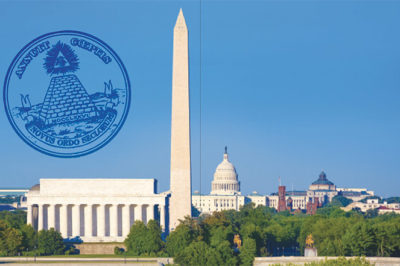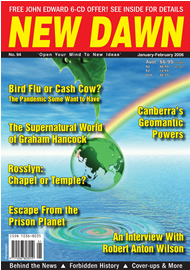From New Dawn 94 (Jan-Feb 2006)
Political activists of the so-called “religious Right” in the United States never tire of preaching that their country was founded as “a Christian democracy.” But they are wrong on both counts.
When Benjamin Franklin was leaving the first Continental Congress, he was asked by one of many anxious patriots waiting outside the courthouse, “What have you given us?” Franklin replied, “A republic, if you can keep it.”
The difference might seem trivial or even non-existent to narrow-minded persons for whom democracy and dictatorship are the only conceivable forms of government. Yet, the very word, “democracy,” does not occur once in the Bill of Rights, the US Constitution, or any state constitution. It was mentioned often by America’s Founding Fathers, but invariably as a synonym for “mob rule,” and, along with obsolescent monarchy, an evil to be avoided.
Thomas Paine, the American Revolution’s most eloquent voice, summed up his colleagues’ view of democracy when he described it in his world-famous “Rights of Man” as “a species of demagoguery, wherein clever charlatans, making promises as enticing as they are impossible to fulfil, win for themselves unwarranted power and wealth, persuading gullible people to discard their liberties for a secret tyranny masquerading as public freedom.”
Particularly in the writings of Thomas Jefferson, the historic models held up for emulation did not include Greek democracy, but the Venetian and Roman republics. The difference between these examples most important to men like Paine and Jefferson was the concept of citizenship. Anyone born in a democratic state automatically becomes a citizen with all the privileges that entails, including the right to vote. In a republic, one is not born a citizen, but may only become one when he or she reaches adulthood; can demonstrate at least a fundamental grasp of the workings of their government, and is either going to school or gainfully employed.
In modern America, all that remains of these basic requirements is a restriction against voting until one’s eighteenth year. Foreigners must, in fact, pass tests proving their basic comprehension of the Constitution before becoming US citizens, which makes them more knowledgeable, discerning voters than native-born Americans, who are supposed to receive the same kind of rigorous Constitutional education, but rarely, if ever, do. In demanding at least some qualifications for citizenship, America’s Founding Fathers believed that responsible leaders could only by chosen by a competent electorate. Today, however, such notions are shunned as “elitist” in most countries described as “democratic.”
Yet more shocking to bible-beating conservatives, if they were to learn the awful truth, is that the United States was not founded by Christians, at least of the kind they would approve. Instead, that country’s constitutional republic was conceived, fought for and built almost entirely by deists. While the majority of Americans, then as now, were at least nominally Christian, most of their leaders were not. George Washington, John Hancock, Patrick Henry, Paul Revere and virtually all of their intellectual compatriots were deists. The term is not generally familiar today, but signifies a person who believes in a universal, compassionate Intelligence that made and orders Creation, manifests its will through natural law, but requires no religious dogma to be understood, only the faculty of reason with which every human is endowed.
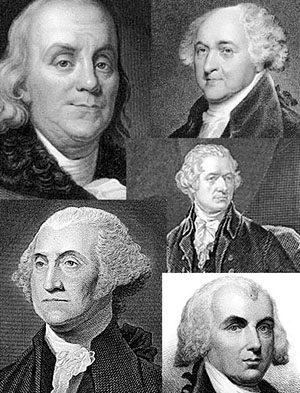
Referring to the church of his day, Paine wrote, “The Christian theory is little else than the idolatry of the ancient mythologists, accommodated to the purposes of power and revenue… My own mind is my own church.” Like his fellow deists, who made a clear distinction between church and state, he was convinced that freedom meant being able to speak one’s mind on all subjects, religious as well as political. He did not “condemn those who believe otherwise. They have the same right to their belief as I have to mine.”
Nor were the deists anti-Christian. They concluded that Christianity had at its theological core the same mystical truth found in every genuine spiritual conception; namely, the perennial philosophy of compassion for all sentient beings as the means by which the human soul develops. This recognition, however, deeply offended mainstream Christians, who insisted their brand of faith alone was correct, all others being heretical at best or demonic at worst.
As an example of the extremes these defenders of the One True Religion went to demonstrate their piety, hob-nails initialled “T.P.” were sold by the thousands to Londoners who could walk all day on the name of Thomas Paine. His treatment in the land he had done so much to free was more harsh. When he walked through the streets of his hometown in Bordentown, New Jersey, doors and window shutters were pointedly banged shut as he passed by, while cries of “Devil!” followed him everywhere.
Modern American Christian crusaders would be even more alarmed to learn that not only was their country founded by deists, but its capitol deliberately designed as a metaphor for Freemasonry. In his profoundly researched book, The Secret Architecture of our Nation’s Capital (London: Century Books, Ltd., 1999), author David Ovason offers abundant evidence to show that Washington, D.C. was built by Freemasons who incorporated their arcane, even heretical ideas in the White House, the Washington Monument, the Library of Congress, the Post Office, the Capitol Dome, the Federal Trade Commission Building, the Federal Reserve Building, even Pennsylvania Avenue itself.
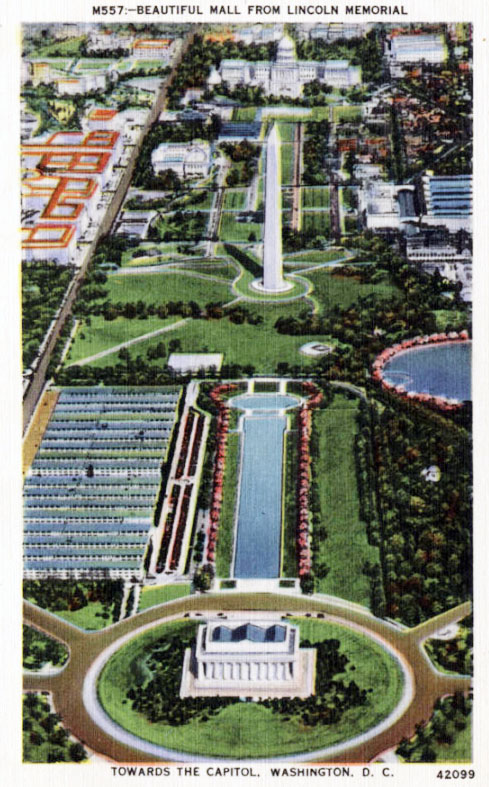
But what is, or was, Freemasonry? Like any idea or organisation that persists over time, Freemasonry deviated from its initial purpose until, in the end, it bore only slight, outward resemblance to its origins. By way of comparison with a group alleged without much real foundation to have been Freemasonry’s precursor, the Knights Templar was founded in the early 12th century, ostensibly for guarding pilgrim routes to Jerusalem with a few soldiers sworn to poverty and abstinence, but grew to become a virtually autonomous army richly equipped and armed, finally blossoming into an economic entity so potent it called down on itself the murderous envy of a French king.
So too, Freemasonry began in 1717 as a fraternity dedicated to humanitarian, deistic principles for Englishmen unhappy with the royal powers-that-be, and so were forced to operate with discretion. By the time early Americans were ready to part ways with the Mother Country, Freemasonry had spread to their shores and was embraced by many revolutionaries as an expression of opposition to everything British, including the Church of England. The secret order continued to grow in membership and prestige, until it was infiltrated and perverted from its high-minded ideals by Spartacus Weishaupt, a demented power-freak who wanted a respectable vehicle for subversion and insurrection. Separated by a vast ocean from the facts, even Thomas Jefferson was fooled by Weishaupt’s duplicity.

Henceforward, the “Free and Accepted Masons” were lumped together with Communists as the secretive enemies of Western Civilisation, and outlawed in most European countries. Even in the United States, though they were never banned, the Freemasons were under suspicion by the Federal Bureau of Investigation for many years, and condemned by several congressmen. Thus criminalised or under suspicion, their popularity went into a long decline, until today their once numerous, now largely abandoned lodge buildings, some still bearing masonic emblems, testify to an aging, dwindling following. It is wrong, therefore, to parallel the Freemason George Washington, for example, with the likes of Adam Weishaupt, anymore than it is to equate George Washington with George Bush.
“The very struggle for independence seems to have been directed by the Masonic brotherhood,” Ovason writes, “and, some historians insist, had even been started by them.” Indeed, the War for Independence began in a warehouse owned by a Mason, and a majority of the revolutionaries who undertook the Boston Tea Party of 1773 were Masons. The most famous American Mason was George Washington himself, although some biographers not altogether happy with Freemasonry have tried to minimalise his association with it. In fact, however, he was the first Master of the Alexandria, Virginia lodge (Number 22) from April, 1788 until December the following year.
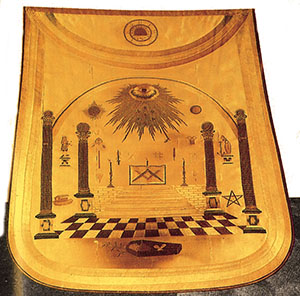
It was this lodge number that was carried before him on a masonic standard, as Washington, leading ranks of fellow Masons all wearing their emblematic aprons, walked in procession to the founding of the American capital, in 1793. The event was commemorated in a pair of bronze panels designed in 1868. They portray him laying the cornerstone surrounded by masonic symbols, including the square and trowel. Washington was still Master Mason when inaugurated as the first President of the United States on 30 April 1789. After his death ten years later, he was laid to rest at his Mount Vernon estate in a masonic funeral, during which all save one of the pallbearers were members of his own lodge.
Ovason observes in a companion volume (The Secret Symbols of the Dollar Bill, CA: HarperCollins, 2004) that Washington’s masonic significance was not only expressed in the city to which he gave his name: “The portrait of George Washington, at the centre of the dollar bill, is highly symbolic.” The President’s image is centrally framed by the last letter in the Greek alphabet, an Omega, for “completion”, or the Ultimate, and implying that the foremost Founding Father represented the apogee of human values. His appearance on the one-dollar bill is by no means the only non-Christian symbol found here.
Especially cogent is the illustration of a truncated pyramid surmounted by a radiant delta enclosing a single eye beneath the words Annuit Coeptis. A motto on a scroll near the base reads, Novus Ordo Seclorum. Both were derived from the great Roman writer, Virgil. In his classic epic, the Aeneid, he directs a prayer for assistance to Jupiter, king of the gods: Audacibus annue coeptis, or “Favor our daring undertaking!” Novus Ordo Seclorum, “a New Order for the ages,” was taken from one of his famous Ecologues – Magnus ab integro seclorum nascitur ordo, or, “The great series of ages is born anew.”
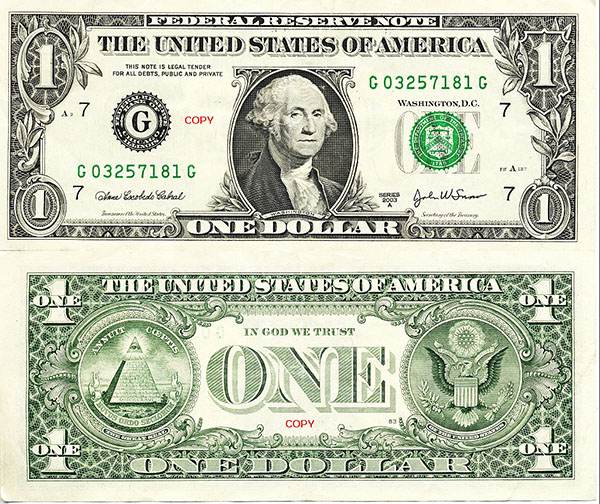
“The idea of a truncated pyramid was Masonic,” Ovason writes. It is certainly “pagan,” and generally understood to mean stability and virtue in the 18th century. According to President William McKinley, the twenty fifth president of the United States and himself a Mason, it also meant strength and duration. But these obvious characterisations only represent the figure’s exoteric aspect. Far less well recognised, the pyramid depicted on the one-dollar bill, unlike any in the Nile Valley, has seventy two stones. This amount is hardly circumstantial, because it has been revered by mystics as one of the most sacred of all numerals.
Since Pythagorean times, in the 7th century BCE, and millennia earlier still in ancient Egypt, 72 has represented the ways of writing and pronouncing the name of the Almighty, not the Christian or even Old Testament Yahweh, but God as represented by the Sun, as it moves through space and time. Ovason explains, “Due to the phenomenon called precession, the Sun appears to fall back against the stars. This rate of precession is one degree every seventy two years.” In other words, the dollar bill’s seventy two stones signify the deist conception of the Supreme Being as rooted in the pre-Christian, non-Biblical Ancient World.
The single-eyed triangle radiating energy above the truncated pyramid is another Egyptian image, the Utchat, or Udjat, the all-seeing eye of Ra, a sun-god and the divine king of heaven. Esoterically, the Utchat was identified with Maat, the moral law pervading all Creation. Its appearance hovering above the apex of the dollar bill pyramid not only reinforces the solar symbolism of that sacred structure, but embodies the principle of Maat America’s Founding Fathers sought to inculcate in the constitutional republic they designed.
But the esoteric, deistic, even “pagan” Freemasonry of America’s Founding Fathers is most apparent in the arcane influence that Ovason traces throughout the design and construction of the US capital. These early Americans did not weave this occult symbolism through their country’s foremost city for clubbish reasons, but because their iconological signs were the emblems of a new civilisation they wanted to create in the New World.
For New Dawn’s 92nd issue, Jason Jeffrey described in “Washington, D.C.: A Masonic Plot?” how the White House is located at the apex of a five-pointed star – the ancient geometric seal of King Solomon, with which he conjured supernatural powers – formed by the intersections of Massachusetts, Rhode Island, Vermont and Connecticut Avenues with K Street NW. But the significance of this urban pentagram is overshadowed by what Ovason has identified as the city’s chief orientation to Virgo.
He writes that central Washington, D.C. has twenty public zodiacs, with Virgo prominent in each one. The founding of Federal City, as it was previously known, laying the cornerstones of the President’s House, in the wing of the Capitol and the foundation stone of the Washington Monument, all were timed to coincide with the appearance of this astrological figure. Ovason shows that the White House, Capitol building and Washington Monument form a strangely imperfect “Federal Triangle” that only makes sense when we realise it identically resembles a configuration made by the stars – Arcurtus, Spica and Regulus – that bracket Virgo.
On evenings from August 10th to the 15th, as the Sun sets over Pennsylvania Avenue, the Constellation Virgo appears in the sky above the White House and the Federal Triangle. At that same moment, the setting Sun appears precisely above the apex of a stone pyramid in the Old Post Office tower, which is just wide enough to occlude the solar disc. According to the 19th century Freemason, Ross Parsons, “The Assumption of the Virgin Mary is fixed on the 15th of August, because at that time the Sun is so entirely in the constellation of Virgo that the stars of which it is composed are rendered invisible in the bright effulgency of his rays.”
Formal ground-breaking ceremonies for the National Archives Building were conducted under Virgo. Two years later, three planets were in Virgo for the official laying of the structure’s cornerstone. The Federal Reserve Building is replete with a five-petaled design motif, the symbol of Virgo. The great clock at the Library of Congress is depicted with a comet in Virgo. Because of its centralised location, Ovason believes that “the Library of Congress was sited in this position and its symbolic program established precisely in order to demonstrate the profound arcane knowledge of the Masonic fraternity which designed Washington, D.C. … the city was surveyed, planned, designed and built largely by Masons.” Indeed, no less than twenty one memorial stones with lapidary inscriptions from various masonic lodges line the inside shaft of Washington Monument.
But why would they incorporate so many references to Virgo in their capital? As Ovason points out, the construction of Washington, D.C. “marked one of those rare events in history when a city was planned and built for a specific purpose.” He fails to mention, however, that nearly two hundred years before, the first permanent European settlement in North America foreshadowed Virgo’s ceremonial centre on the Potomac River.
In 1606, Sir Francis Bacon established Jamestown in Virginia, ostensibly named after Elizabeth, the Virgin Queen. But the emblem he chose, and which survives today as the state seal, is the image of Pallas Athene, Parthenos, the virgin goddess of Greek myth, the divine patroness of civilisation.
Bacon, as Greg Taylor observed in the same issue of New Dawn, prefigured the Freemasons with his vision of a practical utopia based on individual liberty and social responsibility – essentially the same ideals that formed the basis of the US Constitution. When America’s Founding Fathers came to compose that document, they perpetuated the identical sacred virginal symbolism initiated at Jamestown.
Repeated symbolism in the architecture, astrological timing and the very lay-out of Washington, D.C. to Virgo-Virgin Athene represent homage to the Eternal Feminine, Goethe’s “ewige Weiblicher,” which, in his “Faust,” leads us onward – “zieht uns hinan.” The Freemasons who envisioned and constructed the capital of the United States did so to put their new country in accord with that pure (“virginal”) energy they believed to actually exist as the demiurge of Creation. They worshipped that energy, personified in the goddess, a concept that was anathema to the patriarchal Christians of their time (and ours?).
As Ovason concludes, “A city which is laid out in such a way that it is in harmony with the heavens is a city in perpetual prayer.” Given so great a distance the present occupants of Washington, D.C. have strayed from the original intentions of its designers, the US capital needs all the prayers it can get!
© New Dawn Magazine and the respective author.
For our reproduction notice, click here.

